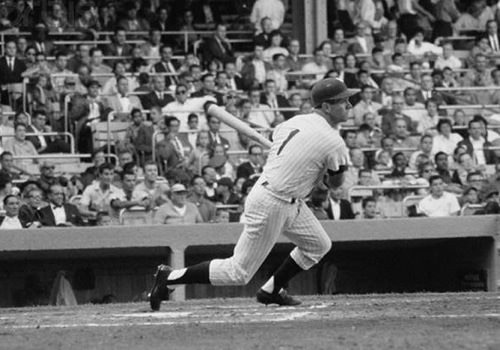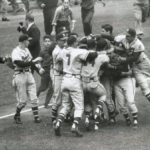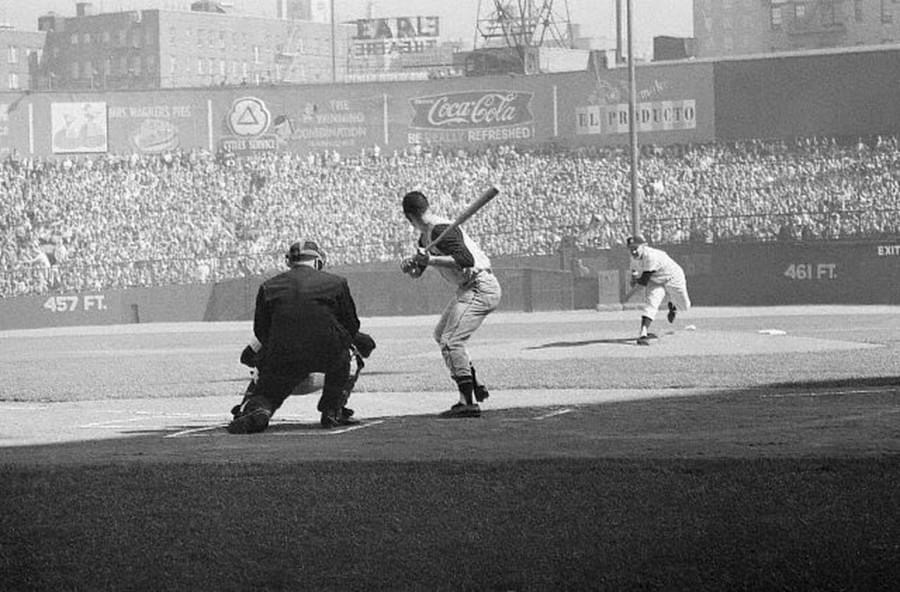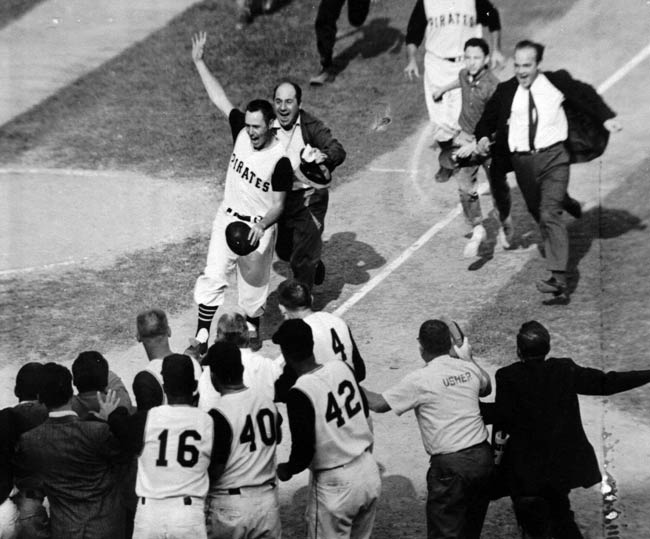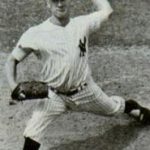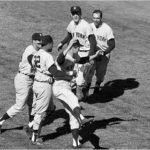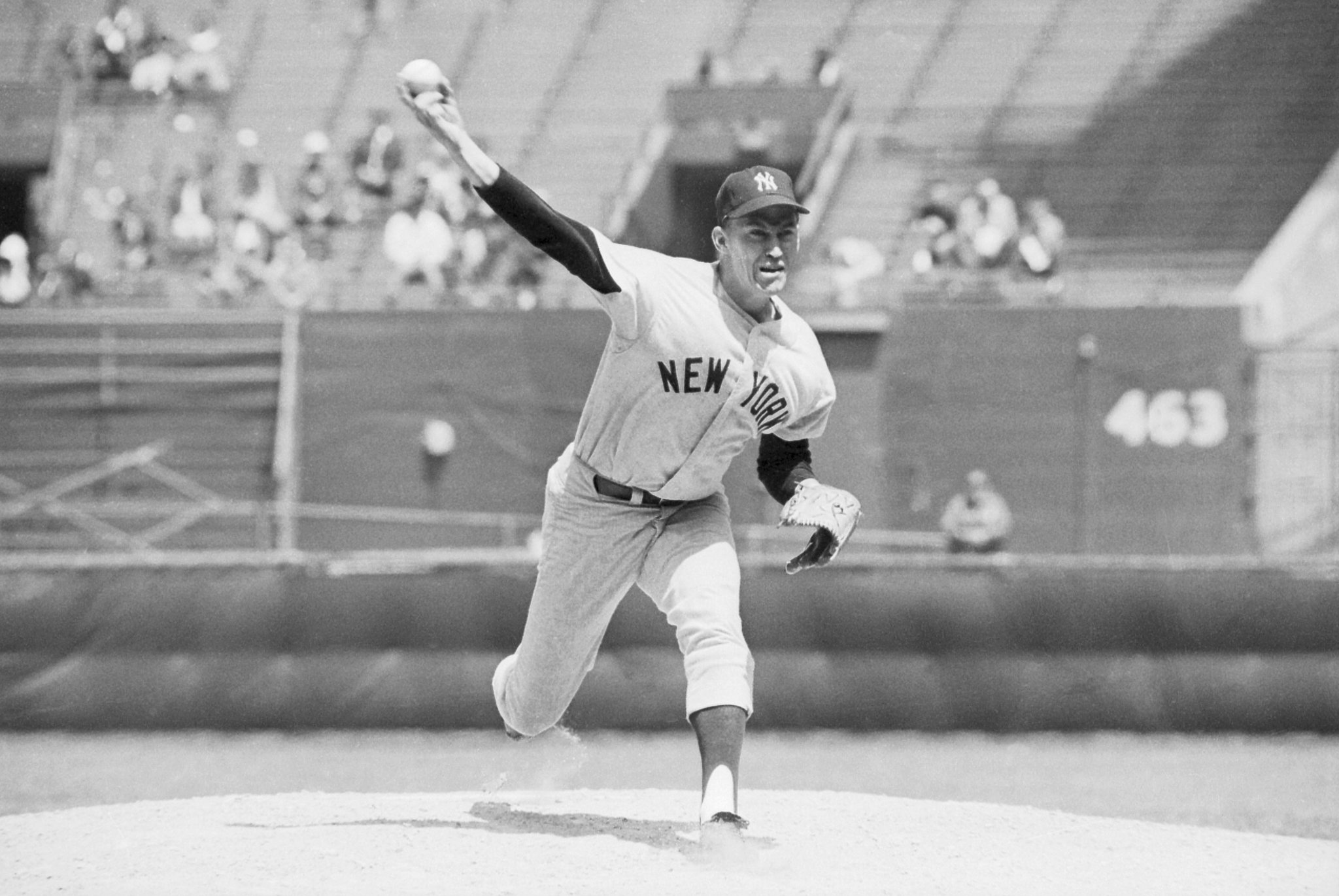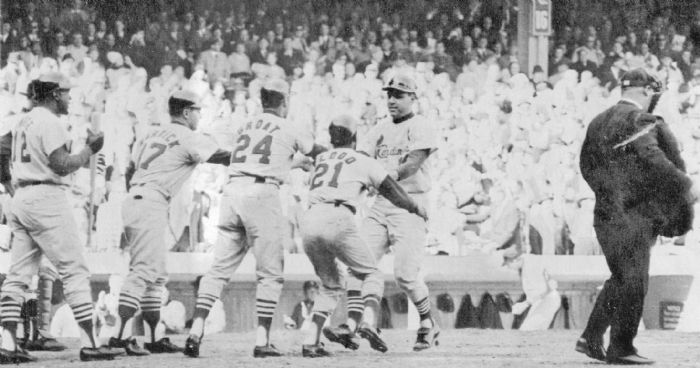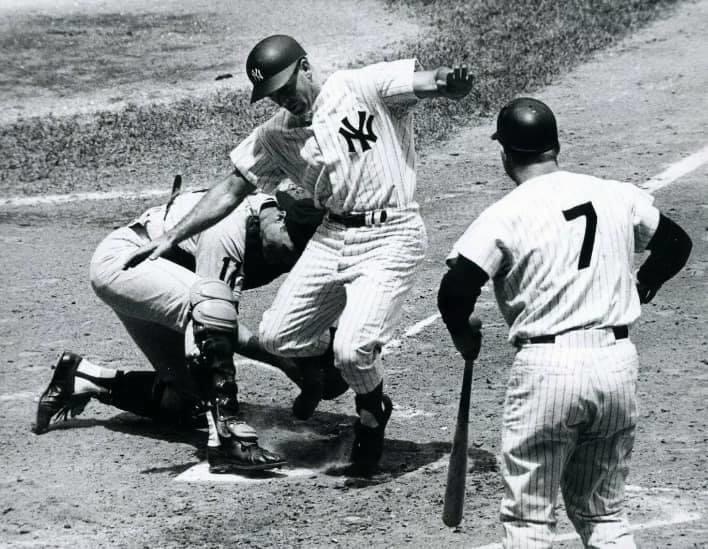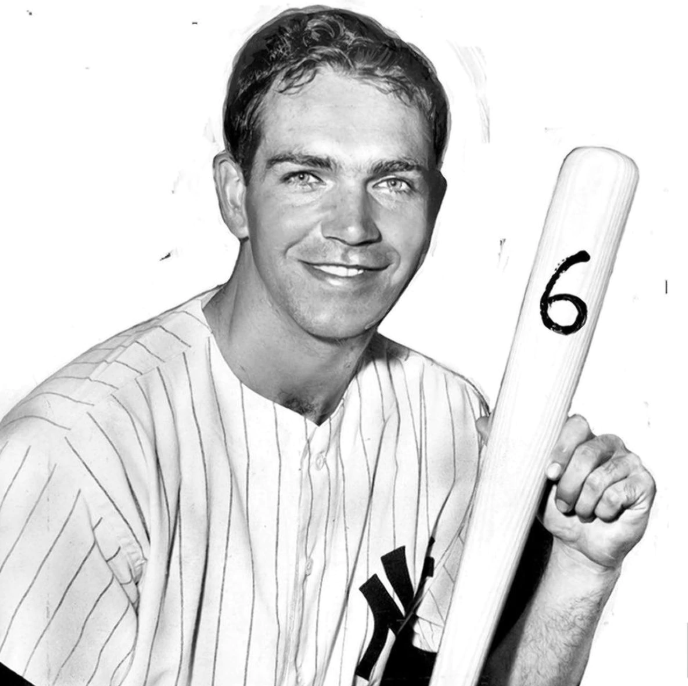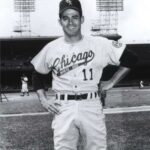Bobby Richardson Stats & Facts
Bobby Richardson
Position: Second Baseman
Bats: Right • Throws: Right
5-9, 170lb (175cm, 77kg)
Born: August 19, 1935 (Age: 85-225d) in Sumter, SC
High School: Edmunds HS (Sumter, SC)
Debut: August 5, 1955
vs. DET 3 AB, 1 H, 0 HR, 0 RBI, 1 SB
Last Game: October 2, 1966
vs. CHW 4 AB, 1 H, 0 HR, 1 RBI, 0 SB
Full Name: Robert Clinton Richardson
View Player Info from the B-R Bullpen
View Player Bio from the SABR BioProject
Notable Events and Chronology for Bobby Richardson Career
Bobby Richardson is the only World Series MVP to play for the losing team. In the Yankees loss to the Pirates in 1960, the second baseman hit .367 (11 for 30) with 8 runs scored, 12 RBIs, 2 doubles, 2 triples, and one home run. Three years later, in 1964, he collected a World Series record 13 hits with a .406 average but once again in a losing cause as the Yankees fell to the Cardinals in seven games.
Casey Stengel once said of Bobby Richardson, “Look at him. He don’t drink, he don’t smoke, he don’t chew (tobacco), he don’t stay out too late, and he still don’t hit .250!”
That remark exemplifies the kind of relationship Richardson had with Stengel, who managed the infielder the first six years of his major league career. Yet, despite Stengel’s somewhat critical appraisal of him, Richardson went on to establish himself during the early 1960s as the American League’s top second baseman, and as one of the junior circuit’s most consistent and durable performers. The winner of five consecutive Gold Gloves from 1961 to 1965, Richardson also made five straight appearances on the All-Star Team and missed a total of only 31 of his team’s 1,028 games between 1961 and 1966.
Biography:
Born in Sumter, South Carolina on August 19, 1935, Robert Clinton Richardson signed with the Yankees as an amateur free agent shortly after he graduated from Edmunds High School in Sumter in 1953. After spending two years in the Yankee farm system, the promising young infielder joined New York for the first time in August of 1955, just two weeks shy of his 20th birthday. Filling in at second base and shortstop, Richardson saw little playing time over the season’s final two months, coming to the plate a total of just 29 times and batting just .154. He spent most of the following year in the minor leagues, before rejoining the Yankees for good in 1957. Still, the presence on New York’s roster of several other capable second basemen such as Gil McDougald, Billy Martin, and Jerry Lumpe relegated Richardson to a part-time role with the team over the course of the next two seasons. It wasn’t until 1959 that the 5’9″, 175-pound Richardson earned a significant amount of playing time, appearing in 134 games and posting a .301 batting average.
Although Richardson took over as New York’s full-time second baseman the following year, playing in a total of 150 games, he struggled somewhat at the plate, batting .252, hitting only one home run, driving in just 26 runs, and scoring only 45 others. Yet Richardson put on a memorable performance against the Pittsburgh Pirates in the 1960 World Series, batting .367 with 11 hits, a grand slam, and eight runs scored. He set World Series records with 12 total RBIs and 6 RBIs in Game Three. The Yankees ended up losing the Fall Classic to Pittsburgh on Bill Mazeroski’s home run in the bottom of the ninth inning of Game Seven. But Richardson’s effort enabled him to become the only player in baseball history to play on the losing team and still be voted Series MVP.
Development into American League’s Top Second Baseman:
Ralph Houk replaced Stengel as Yankee manager prior to the start of the 1961 campaign – a change in leadership that benefited Richardson. In comparing what it was like playing for the two men, Richardson later explained, “Casey would get the most out of you, but he would do it in such a way that he would make you so mad you wanted to go out and prove him wrong. Ralph treated his players differently, and I enjoyed playing for him much more.”
One of the first things Houk did after he assumed the managerial reins of the team was to expand Richardson’s role. In addition to playing him every day, Houk placed Richardson at the top of the batting order, inserting him into the leadoff spot. Furthermore, the second baseman no longer had to worry about being pinch-hit for late in games – a practice to which he became accustomed under Stengel. Houk, who preferred to go with more of a set lineup than Stengel, also ended the previous manager’s practice of moving Tony Kubek all over the field, placing the versatile Kubek at shortstop full time and inserting him into the number two spot in the batting order. The end result was the best doubleplay combination in the American League, with Richardson becoming one of the most durable players in the game. In addition to missing only 31 of his team’s 1,028 games between 1961 and 1966, Richardson amassed more than 600 at-bats in each of those seasons, earning a selection to The Sporting News All-Star team each year. During that period, he led American League second basemen in doubleplays four times and in putouts twice, and his 136 doubleplays in 1961 are among the highest ever totaled by a second baseman. Richardson ended up winning five Gold Gloves and being named to the American League All-Star team a total of seven times.
Friend and former teammate Tony Kubek showed his appreciation for his doubleplay partner when he said, “Bobby was really the leader of our infield. He was the guy who played every day, and played hurt. Bobby had as good a range as anybody in the game, turned two on the doubleplay as well as anybody, and had the leadership qualities that were admired by everybody in the clubhouse.”
The admiration and respect that Richardson’s teammates had for him went beyond his playing ability. Although foul language between teammates has long-been an accepted practice, the other Yankee players knew that the second baseman was a religious man and generally chose their words carefully around him as a result. On one occasion, Moose Skowron was having a particularly difficult afternoon at the plate, and, after striking out for the third time in the game, he let loose with a string of obscenities after entering the Yankee dugout. Yet he had the presence of mind to interject an “Excuse me, Bobby” as he passed Richardson on the bench, before resuming his tirade as he continued on his way down to the other end of the dugout.
Mickey Mantle was another who had a great deal of respect for Richardson. After he was voted the American League’s Most Valuable Player in 1962, Mantle said that he thought the award should have gone to Richardson instead. The second baseman, who posted the finest numbers of his career, finished second in the balloting to Mantle. In addition to establishing a Yankee record with 692 official at-bats, Richardson led the American League with 209 hits, and he finished seventh in batting average (.302), fourth in runs scored (99), fourth in doubles (38), and ninth in total bases.
A solid clutch performer throughout his career, Richardson compiled a lifetime .305 batting average in World Series play. After destroying the Pirates during the 1960 Fall Classic, he batted .391 against Cincinnati in the 1961 Series, establishing in the process a record for most hits (9) in a five-game Series. He also tied the record for most hits in a seven-game Series (13) against the Cardinals in the 1964 Fall Classic. Richardson’s clutch-hitting eventually earned him the praise of his earlier critic, Casey Stengel, who later suggested, “Bobby Richardson was the best .260 hitter ever to play the game.”
One of the most difficult men in baseball to strike out, Richardson fanned a total of only 243 times in just under 5,800 total plate appearances over the course of his career. He struck out fewer than 30 times in six of his eight seasons as a full-time player.
Nevertheless, Richardson is generally considered to have been a below average offensive player due to the infrequency with which he reached base via the walk. The second baseman’s impatience at the plate prevented him from ever drawing more than 37 bases on balls in any single season, thereby leaving him with a rather unimpressive .299 lifetime on-base percentage.
Still, the Yankees sorely missed Richardson’s consistency and leadership when he retired at the end of the 1966 season. The second baseman was only 31 years old at the time, and he likely could have played another four or five seasons. However, Richardson had grown weary of the constant travel associated with playing ball professionally, and he wanted to spend more time with his family. He also had other interests that occupied his thoughts much of the time during the latter stages of his career. After coaching baseball at the University of South Carolina for awhile, Richardson eventually entered the ministry.
Biography
@ET-DC@eyJkeW5hbWljIjp0cnVlLCJjb250ZW50IjoicG9zdF90YWdzIiwic2V0dGluZ3MiOnsiYmVmb3JlIjoiTGVhcm4gTW9yZSBhYm91dCB0aGUgdGVhbXMsIHBsYXllcnMsIGJhbGwgcGFya3MgYW5kIGV2ZW50cyB0aGF0IGhhcHBlbmVkIG9uIHRoaXMgZGF0ZSBpbiBoaXN0b3J5IGp1c3QgY2xpY2sgdGhlIHRhZ3MhICAiLCJhZnRlciI6IiIsImxpbmtfdG9fdGVybV9wYWdlIjoib24iLCJzZXBhcmF0b3IiOiIgfCAiLCJjYXRlZ29yeV90eXBlIjoicG9zdF90YWcifX0=@

